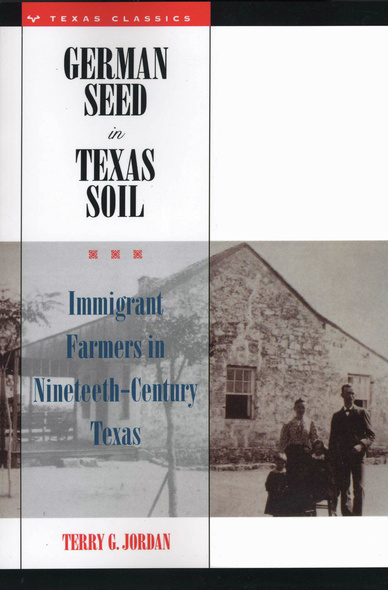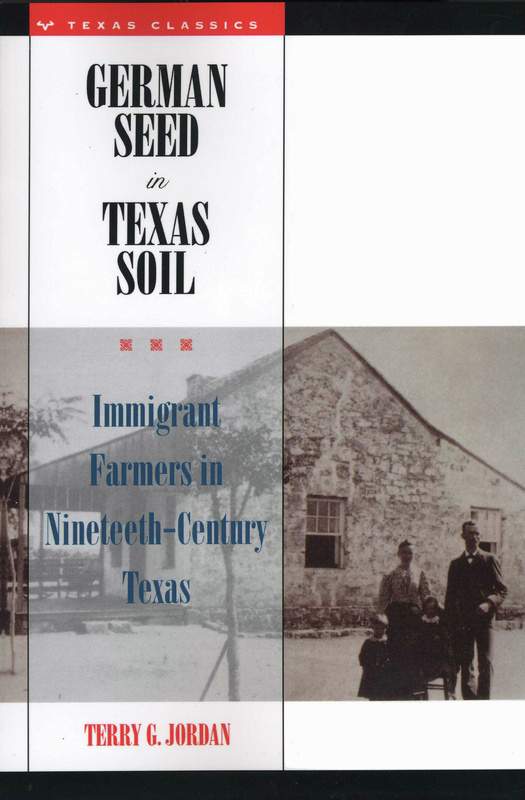German Seed in Texas Soil
Immigrant Farmers in Nineteenth-Century Texas
SERIES:
Texas Classics
University of Texas Press
Terry Jordan explores how German immigrants in the nineteenth century influenced and were influenced by the agricultural life in the areas of Texas where they settled. His findings both support the notion of ethnic distinctiveness and reveal the extent to which German Texans adopted the farming techniques of their Southern Anglo neighbors.
The lasting benefits Texas has received from its Germans mark our place names, our historic records, even our food and drink. Dr. Jordan's [book] makes this clear and is a valuable contribution to Texana.
Detailed with maps, charts and pictures, the book is excellent reading for many Texans whose ancestors came to Texas direct from Europe.
. . . an eminently readable book . . . in its recording of the adaptation of a transplanted human population to a new environment.
If one of my colleagues in American history asked me for a good book in geography, I would give him this one.
It makes a contribution to the lore of the nineteenth-century immigrant; it throws some light on the history of Texas agriculture. Perhaps more important, however, is that the method of research as well as the method of presentation ... show that geographer and historian can collaborate to their mutual benefit.
- Preface to the Fourth Paperback Printing
- Acknowledgments
- 1. Introduction
- 2. Nineteenth-Century Southern Agriculture and Its Expansion into Texas
- 3. Nineteenth-Century German Farmers and Their Emigration to Texas
- 4. Germans in the Cotton Kingdom: The Eastern End of the German Belt, 1831-1885
- 5. Germans on the Rim of the Desert: The Western End of the German Belt, 1844-1885
- 6. Conclusion: The Importance of Cultural Heritage in the Agricultural Systems of the Immigrant Groups
- Appendix
- Bibliography
- Index





